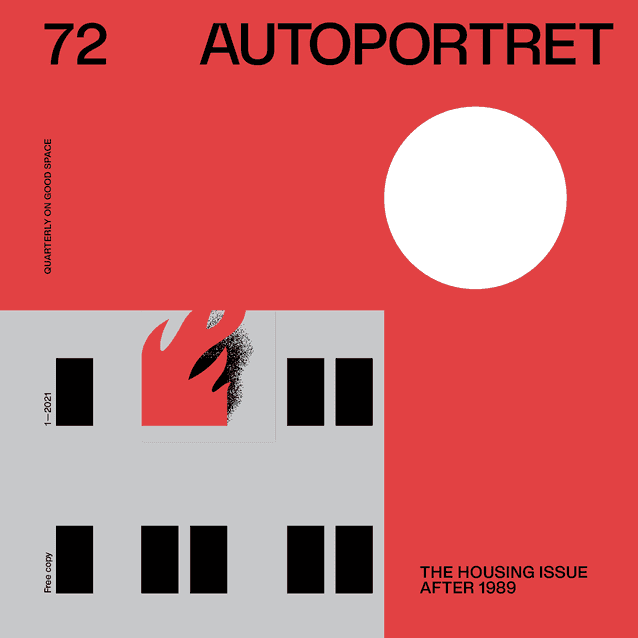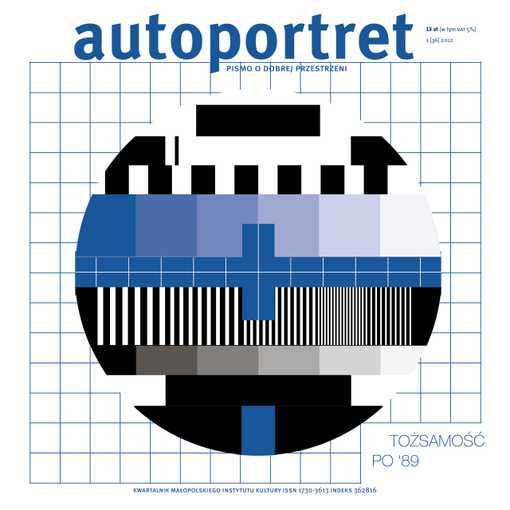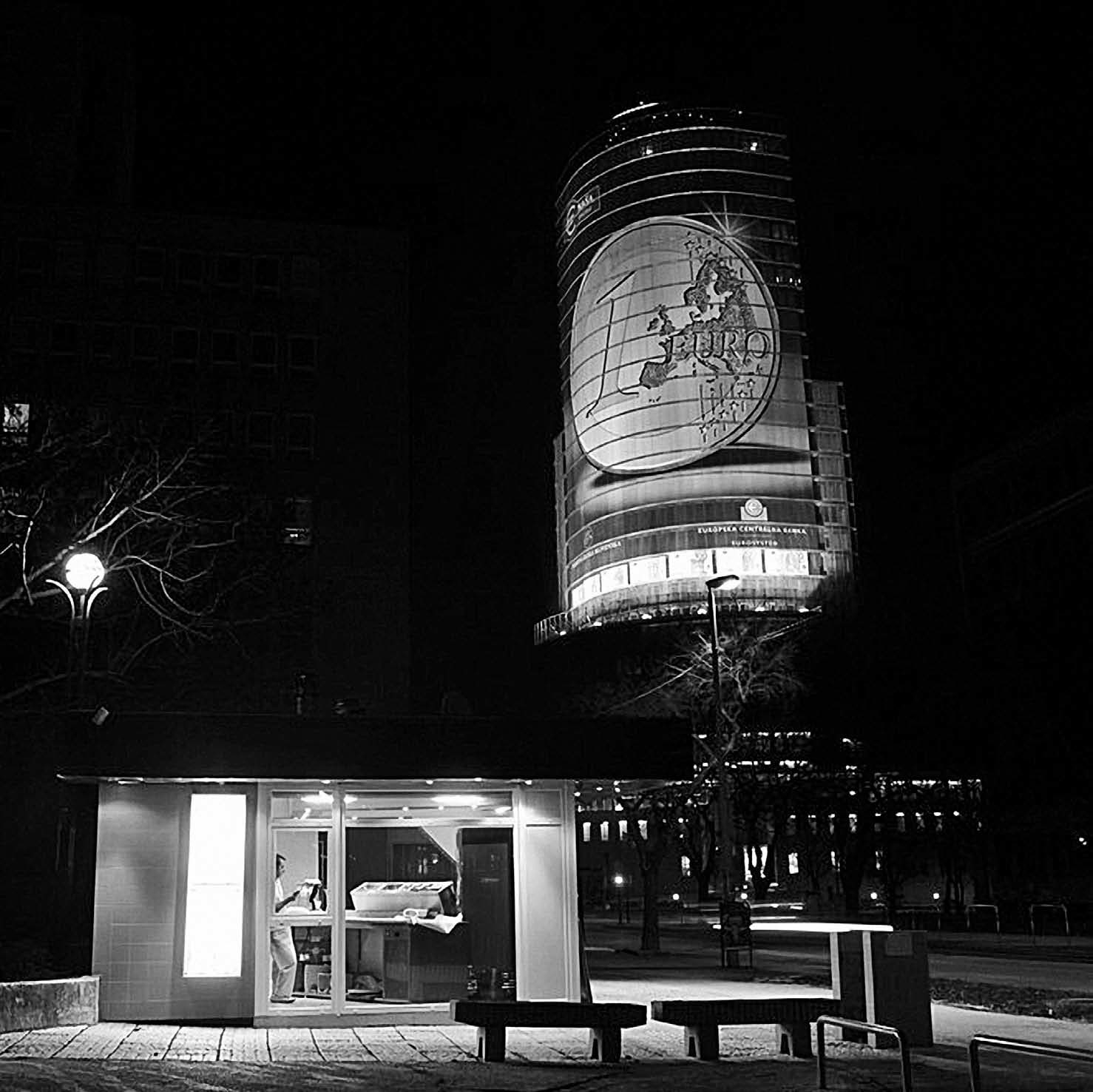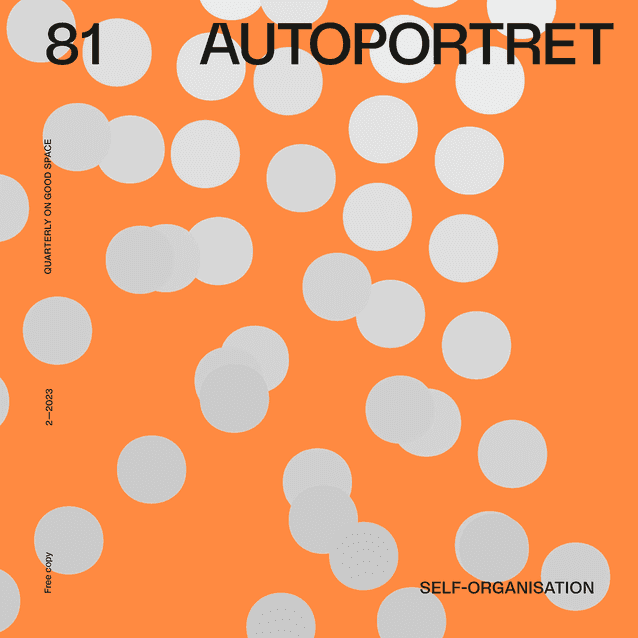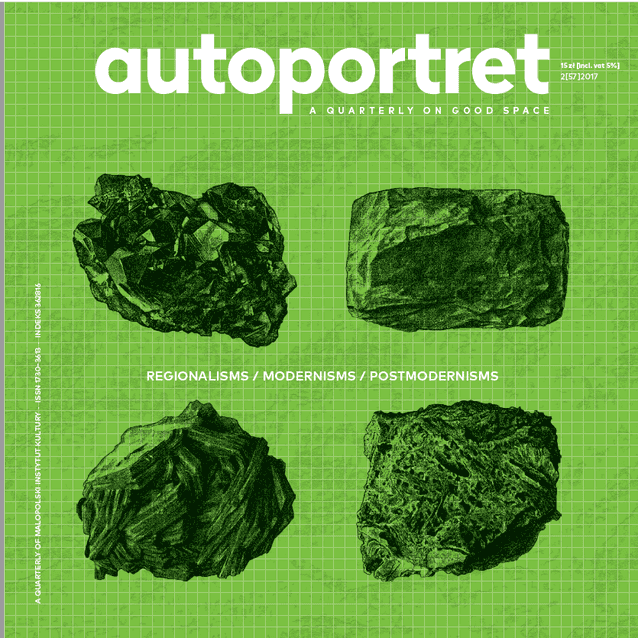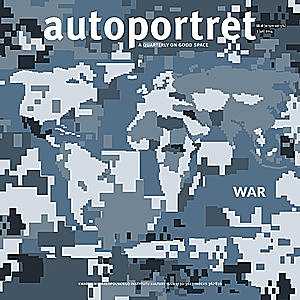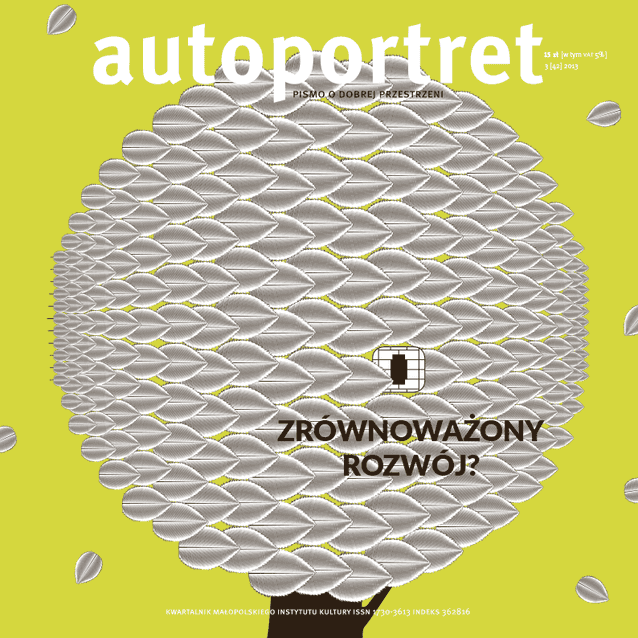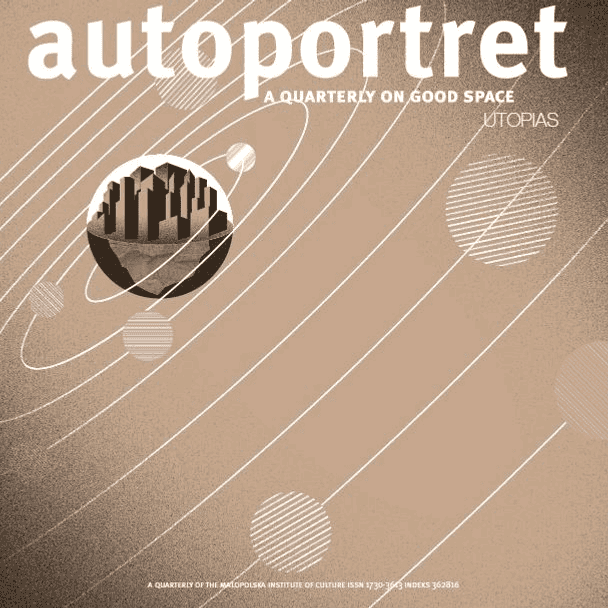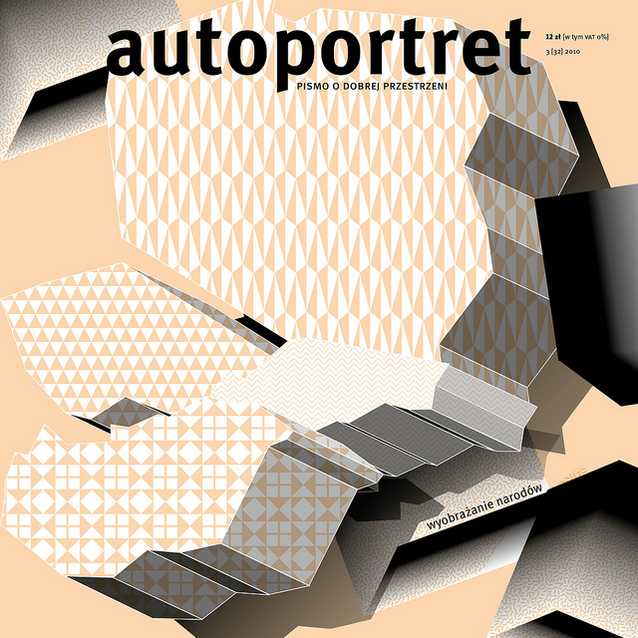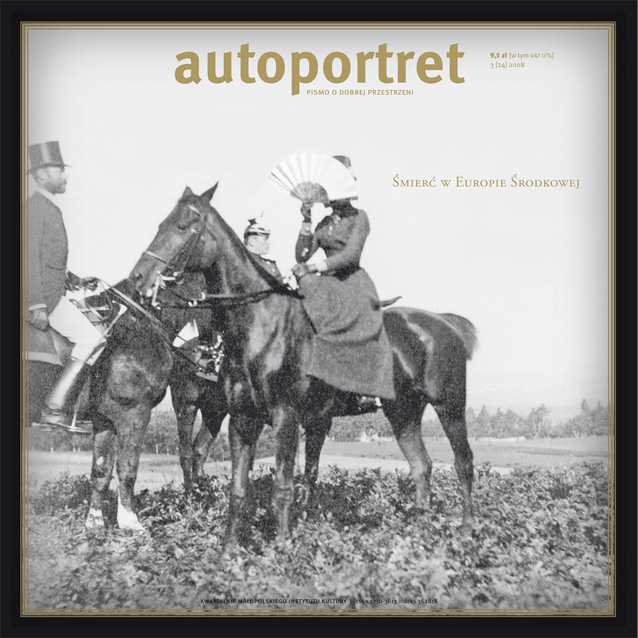Observations on spatial identity
Now the city, which had weighed and tasted and smelled them, which had used all its powers save one, prepared to use its final ability, the power of speech. It did not speak with the rage and hostility of its massed walls or towers, nor with the bulk of its cobbled avenues and fortresses of machinery. It spoke with the quiet voice of one man.
Ray Bradbury, The City
Urbanity and urban semiotics
The problems of urbanity, recurrent in discussions of urban planners, space planners, architects, economists and sociologists, may divide or unite these professionals, foreshadowing future trends prevalent in social discourse. Approaches to these problems are characteristic and representative for the ways of thinking at the onset of the 21st century: systems are becoming increasingly complicated and paradigmatic limitations are disappearing, to be replaced by uncertainty of future developments. The old, still relevant definition of urbanity as the unique quality of the city which enables communication and facilitates social contacts in the urban environment is constantly undergoing theoretical experiments. Is urbanity, deprived of the ideological support it enjoyed in the first part of the 20th century, shattered by imperial conflicts, and degraded and fragmented, a concept we can still agree on? It is hard to say.
Post-modernist urban development is apt to create ‘representative spaces’, understood as areas of projection of values, thoughts, ideas or principles. Ugliness, paradox, deformation and allusion have become legitimate narrative strategies for the creation and revitalisation of urban space. Traditional interpretations of urbanity, based on a socioecological foundation (urbanity as density and diversity of urban communities), on the diametric opposition of the public and the private, or on functionalist canons (urbanity as a measure of the development of cityforming functions), have been supplanted by increasingly prominent interpretations of urbanity as an integrated chaos, space for spontaneous, informal and illegitimate activity. 1
An interesting platform for the study of urbanity is urban semiotics. This discipline explores the social significance of forms of space and the ways in which physical objects and spatial types communicate meaning through signs and symbols.2 Semiotics considers the city to be a ‘text based on a grammar of spatial patterns and meaningful structures’. 3 Society, community and an interaction framework are the main contexts for the interpretation of signs and sign registers – more significant than their purely physical and morphological order. Semiotics focuses not only on systems of way-finding, colours, signage, notices, arrows, pictograms, photos, streets, buildings or squares, but also on addresses, maps, telephone numbers, post codes and websites. Shapeless, changeable or visually indiscernible elements are also regarded as signs.
One of the first attempts to formulate an urban ‘grammar’ was the famous concept of mental maps put forward by Kevin Lynch.4 His theory held that elements of the urban and architectural structure – paths, edges, districts, nodes and landmarks – are more than an isolated set of signs and physical elements. It was one of the most precise typologies that was applicable to any urban environment (including a virtual environment); research has confirmed its intercultural accuracy (it is likely to be culture free).
Lynch’s theory, however, was criticised for its alleged reductionism.5 Some critics (such as Gottdiener and Lagopoulos) claimed that urban space is not a text but a ‘pseudo-text’ in that it is created by barely separable semiotic and non-semiotic processes. This revealed the need to revaluate urban semiotics from the theoretical, methodological and research perspective.
Urban personality and its psycho-semiotic analysis
Let us imagine the city as a human personality. Man’s personality, as well as – figuratively – the personality of any other entity (company or city) is the foundation of identity: it differentiates an individual from a multitude of others in an absolutely accurate and explicit way. As a rule, what is original is not particular features of character or personal qualities but their combination. As early as 1957 such a comparison was made by American writer Richard Powell during the launch of his novel The Philadelphian:
‘In order to stimulate writers, the personality of a city or town need not be lovable. In fact, of the nine major cities which have personalities, only San Francisco has a really nice one. The other eight cities often annoy people who have not had the good fortune of being born there. I hope I am not revealing anything top secret when I say that, to many outsiders, Philadelphia and Boston have highly irritating personalities. To many outsiders, these two cities are rather like a pair of sheltered maiden ladies who have become crotchety and eccentric but who happen to be awfully well-heeled.’ 6
Obviously, the personality of the city arises from complex socio-historical processes, but it is also affected by management and the deliberate decisions of its authorities or residents. No city has an ultimately and immutably profiled personality; on the contrary, it is subject to change that can sometimes happen faster than the generational change.
The foundation of any personality, the moment which defines it – not only in its current state but also in the previous stages of its development – and which makes predictions about its future possible, is the hierarchy of values. The urban environment is a mosaic of values and pseudo-values whose influence on the formation of hierarchies of values of individual residents is unlimited. From the perspective of empirical observation another distinctive feature of the city’s personality is its face: the image of the city has a unique countenance and physiognomy made up of symbols, landmarks, accents and other elements of visual communication.
The language of the city speaks not only of the city itself but also of the society that inhabits it; the city’s visual language may be trivial, universal or unique. A less known category used to describe the city, derived from the psychological theory of personality, is its temperament. This makes it possible to grasp the reactions and manifestations of the city, seeking to answer the question of how the city reacts to stimuli (does it tend to be phlegmatic or choleric?). The temperament and the features of the city it involves translate into its atmosphere or ‘spirit’. The atmosphere can be analysed not only from the point of view of its emotional hue but also as regards its mutability in time and space (morning/evening, winter/summer, centre/outskirts).
A group of students of Spatial Development at the Slovak University of Technology was asked to do a laboratory project in visual sociology. Their task was to analyse a hypothetical personality of a chosen city with regard to its semiotic manifestations. Many students chose to focus on Bratislava or its individual, relatively independent (identity-wise) districts. Based on their findings, we shall take a closer look at the ‘personality’ of the Slovak capital.
Bratislava as a personality Memory
Every city’s historical memory is perhaps the crucial component of its identity. The events that shaped its appearance, and especially its hierarchy of values, social atmosphere and hypothetical personality, mark the city for many years. The communist regime lasted slightly more than forty years in Slovakia (1948–1989) but the period left an indelible mark on the city with the abolition of the urban district of Vydrica, the splitting of the heart of the Old Town with the New Bridge, and the extension of the National Gallery. The aesthetics of this period was permeated with ideology – not only in the East but also in the West (though admittedly to a lesser degree). In practice, many architectural solutions are evidence of the decline of functionalism as it created forms devoid of any content slavishly performing the same functions. It is not a coincidence that the height of functionalism was marked by early, isolated realisations doomed to become alien to users due to thoughtless, mechanical repetition.
The aesthetic ideology of organised modernity, which here took the degenerate form known as socialist realism, denied any values to the past and was generally oriented towards technical progress (behind which the cultural and social revolution lagged). The word ‘progress’ was even used as a name for housing estates or cinemas built at the time, as a result of which the term fell victim to communist newspeak: these days it is hard to imagine a developer calling his design this. The aesthetics of this period was derived from the noble premise of the avant-garde that everyone should create; in reality it turned out that not everybody is capable of artistic creation of the same quality. Architecture did not come close to people; conversely, it fostered social anomie.
Bratislava was the capital of the Socialist Republic of Slovakia and from its beginning the intention was that it be redeveloped into ‘a modern capital of the Slovak part of the Socialist Republic of Czechoslovakia’ –eradicating from public memory historic Pressburg, which was to remain ‘in exile’: in buildings such as Reduta and Manderlák, and partly also along the waterfront. Amusingly, socialism did not really know what to do with the centre of Bratislava as a whole: urban structures here were too immutable, untouched by the war and familiar in the residents’ imagination. Before November 1989 the communist regime satisfied itself with strong signs, such as the abovementioned extension to the Slovak National Gallery, or else with superficial changes (covering the waterfront with concrete and building a new harbour). The then tycoons did not dare to demolish historic buildings so they contented themselves with defiling and compromising them in manifold ways so as to turn them into less attractive and less important points in the residents’ mental maps. Devaluation of important sights, rivalry between landmarks (New Bridge vs. the castle), restricted admission (St Martin’s Cathedral), aggressive chromatic and formal contrasts (the old building of the Slovak National Gallery vs. the new extension) were intended to transform the city’s historical memory. Interestingly, however, although the Bratislava corso did suffer architecturally in the 1960s and 1970s, it retained its unique atmosphere. The city’s personality is not formed exclusively by architectural structures, and the residents’ mental maps have enormous power to survive.
The face of the city
The present face of Bratislava is largely an effect of the post-1989 political and social transformations. The city has grown young; its face has lost the dull, exhausted, evasive expression it had in the 1970s and 1980s. The Old Town has been renovated and has gained the self-confident image of a Danubian metropolis. A variety of colours and shapes has emerged, the city has learned to put on different faces in different circumstances. In the 1990s the face of the city was enriched with several new projects of relatively high quality.
Unfortunately, the face of the city was also partly marred by neoliberal stunts at the turn of the millennium. A symbol of these transformations is the ‘River Park’ complex, whose aggressive form explicitly confronts the river, as if it wanted to communicate that the city is here for the complex, or that it has won over the river. Semiotic analysis of the name ‘River Park’ itself reveals that the complex is neither a river nor a park, so it is in fact a semiotic expropriation of connotation to which the response of the target audience is positive (names like ‘Aquapark’, ‘Park One’ and others work in the same way). ‘River Park’ was unlucky, partly because it was constructed at a time when the public was already much more sensitive to such interference (back in the 1990s it would have gone virtually unnoticed). The authorities have also started to realise the historical value of sites which are to some extent connected with the past regime and whose value is considerable or for some reason unique. An example is the Park of Culture and Relaxation (PCR), where festivals and youth parties were held rather than party conventions. The atmosphere in such places enabled people to breathe more freely for a moment.
The face of the city was also transformed by the construction of the ‘Eurovea’ shopping and leisure centre. Although the original concept of ‘Eurovea’ as a ‘natural extension’ of the city towards the river was not fully realised, ‘Eurovea’ may be regarded as an example of successful redevelopment of a non-city – a neglected area of no particular emotional or ritual value to the residents. This was one of the reasons why it was well received by the public. In the environs of ‘Eurovea’ the city is learning tolerance; we can see that it has got wiser and that sometimes people with widely disparate views may (must) live in it side by side. ‘Eurovea’ does not go out of its way to be assertive as much as ‘River Park’ does – in fact there is a lot of ‘genuine plastic’ in its nooks and crannies – but it is trying to enter into an explicit dialogue with the river: it respects the morphology of the river bank and the area, introduces greenery, and turns towards the river through vantage points and piers, and not with sheer violence. ‘Eurovea’ has a similar relationship with other buildings. The dualism of the past and the present (the new building of the Slovak National Theatre and ‘Eurovea Gallery’) was resolved in a much more mature way than in the case of ‘River Park’ and PCR, although even here the historical part obviously fell victim to amnesia (the ‘Stoka’ Theatre, and the House of Sailors). The face of the city is less uniform, more tolerant and colourful.
Therefore it is interesting that, regardless of all ideological differences, there are certain similarities between the monstrous communist buildings from before 1989 (the Slovak National Gallery, the Parliament, the new building of the Slovak National Theatre) and the new neoliberal construction projects (‘River Park’ and to some extent ‘Eurovea’). The German philosopher Herbert Marcuse forecasted in the 1970s that postmodernist capitalism would gradually ‘internationalise’ Marxism and become a perverse hybrid of Soviet-style totalitarianism and unlimited consumerism in the North American style…. In this world, comfort, objects and experiences will form an ideology in their own right, controlled (in a more covert way) by the establishment itself.
The language of the city
The language of the city is a particularly complex material for semiotic study. It comprises not only the language of architecture and urban planning and the context in which it originated but also all the linguistic manifestations through which architecture tends to communicate its meaning. Bratislava developed in the Slovak-German-Hungarian linguistic reality, of which regrettably little has survived till today. The language of the communist time is slowly being forgotten, although to some it still has a kind of nostalgic quality – like everything that becomes the past.
The Bratislava waterfront speaks an interesting architectural and verbal language. Here we can come across sentimental language that verges in places on Mucha’s Art Nouveau (the building of the construction college), the language of early functionalism of the first republic (Comenius University), the authoritative police language of new totalitarian regimes (the building of the Ministry of Domestic Affairs of the Republic of Slovakia), the utilitarian language of the time when functionalism and the avant-garde had not yet completely betrayed their former social ideals (four tower blocks by the tunnel), an attempt to present communism as historical necessity and to prove that history only began in 1948 (the extension to the Slovak National Gallery), the aluminium and glass language of late modernism, devoid of content (the former Presscentre, currently the J&T building , partly also the new building of the Slovak National Theatre), postmodernist eclecticism that does not say anything (‘Eurovea’, Apollo Bridge), as well as relics of the transitory period of squatter improvisation and struggle with developers that was doomed to failure (the abandoned house opposite the former Presscentre). All these languages are forced to coexist and will perhaps one day communicate in some kind of Esperanto.
S. Štasselová, J. Sitarčíková, D. Bubelínyová and Ľ. Halušková also analysed the verbal language spoken by the Bratislava waterfront:
The waterfront is slowly forgetting all its native tongues. Whether it was Hungarian, German, or Slovak, all these are gradually being supplanted by young, fresh and easily understandable English. As a symbol of the proximity of the world, of its accessibility – and as a sign of Bratislava’s cosmopolitism – it is present virtually everywhere: on shop signs, information in shop windows, in names of restaurants. The waterfront speaks with a marked commercial accent, like a huckster who is trying to sell us something we do not want in an often servile and importunate way. The seller is trying to sell merchandise by means of giant notices, colourful, catchy forms, loud, appealing announcements and omnipresent signposts that are meant to put us on the ‘right’ track.7
The city soon learned the characteristic 21stcentury newspeak. Under the pretence of a fun atmosphere, shopping centres lure us to their ‘Delicious Food Corners’ where we get the poorest-quality Asian equivalent of fast food, and passing billboards in these temples of consumerism we will be smiled upon by ‘our nearest and dearest’: mobile telephony operators, insurance companies and cable TV representatives.
The temperament and qualities of the city
Human temperament is inborn and cannot be changed. Is this also true of cities? Let our students R. Jankovič, D. Zsigova and S. Schroeder speak again:
Bratislava reacts to impulses from outside in a phlegmatic way and values its conservatism. The city does not like change. To an observer it seems quiet, or even indifferent. It is only shaken by strong emotions, so it often appears to be cold-blooded, which may be seen as apathy. It cannot be described as full of temperament. In terms of openness, the city may be considered introverted. Just like an introvert, it tends to be reticent and escapist but, should the need arise, it can behave like an extrovert.8
Bratislava’s temperament, unlike that of a human being, is mutable. The stagnation and phlegmatic uncommunicativeness of the 1970s and 1980s have been replaced since 1989 with symptoms of a certain extroversion. Bratislava is becoming a city that is not afraid of showing its reactions, because it has been able to accept or reject many new things. It is colourful and diverse.
As a personality, Bratislava has undergone a lengthy process of development, and numerous turning points in its history have left lasting marks on it. The city’s identity has developed over centuries and is being shaped every day, as it accepts new impulses and deals with old experiences. In this sense, the city is not only a record of past events or current circumstances but also a potential of possibilities, an endless narrative.
Translated into English by Anna Mirosławska-Olszewska
